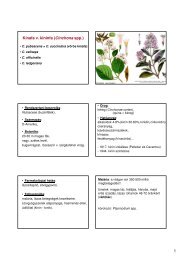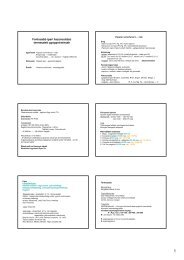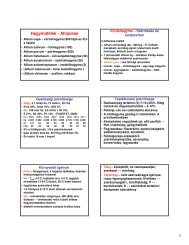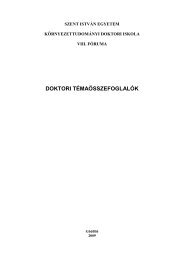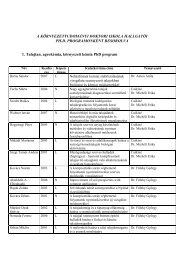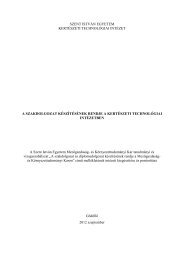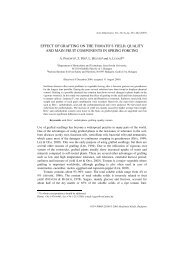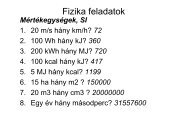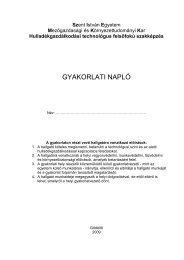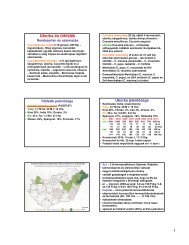PhD Fekete - SZIE version - 2.2 - Szent István Egyetem
PhD Fekete - SZIE version - 2.2 - Szent István Egyetem
PhD Fekete - SZIE version - 2.2 - Szent István Egyetem
You also want an ePaper? Increase the reach of your titles
YUMPU automatically turns print PDFs into web optimized ePapers that Google loves.
3.6.3. Geometrical models<br />
Materials and Methods<br />
Geometric models were mapped by CCD camera system by the use of five prosthesis<br />
geometries. These prostheses are namely:<br />
−<br />
−<br />
−<br />
−<br />
−<br />
Prosthesis 1.: Prototype from the SZIU, non-commercial,<br />
Prosthesis 2.: Biotech TP Primary knee,<br />
Prosthesis 3.: Biotech TP P/S Primary knee,<br />
Prosthesis 4.: BioMet Oxford Partial knee,<br />
Prosthesis 5.: DePuy PFC.<br />
The geometric models were mapped with a Breuckmann OptoTop-HE 3D monochrome scanner<br />
with the 75 µm of resolution at the <strong>Szent</strong> <strong>István</strong> University, by the following steps (Figure 3.29<br />
and Figure 3.30).<br />
Figure 3.29. Scanning settings<br />
Figure 3.30. Setting the focus (left) and actual scanning (right)<br />
The scanned surfaces were processed and assembled in the OptoCat 2010 program and saved as<br />
STL files. The STL files (Stereolithography) are widely used in the 3D prototyping or computer<br />
aided manufacturing. However, the STL is built up as an unstructured, triangulated surface,<br />
which cannot be directly used in a CAD system, but needs to be converted into either a surface<br />
or a body model.<br />
– 109 –




